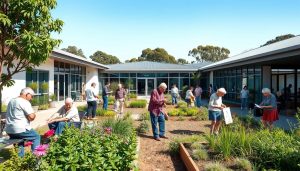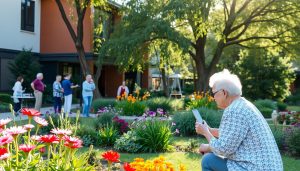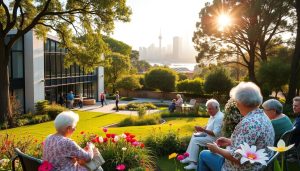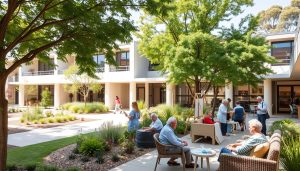Welcome to the season of ageing care with a look at what you need to know about the cost of nursing homes in Australia and the Australian aged care sector.
The growing need for care for the elderly is due to an ageing population and rising life expectancy and life expectancy. The impact of an ageing population is a growing number of Australians who need help with ageing care. To reduce the proportion of older Australians living in nursing homes – care – there needs to be a shift away from home and community care to palliative care for the elderly. Due to the increasing age of people who take care of the elderly, the demands on abortions, care in nursing homes and care for the elderly are also increasing.
Palliative care needs to be clearly formulated and included in the quality standards of care for the elderly that all Commonwealth-funded aged care services must meet. This will allow more older Australians to have a good death and maintain the process of dying and grieving, facilitate the allocation of scarce health resources and ensure better access to care for the elderly and their families.
Queensland Health’s response is supported by all aged care facilities that have notified their local health emergency centre. All persons who care for residents directly, including elderly people in a nursing home or other nursing home, wear appropriate personal protective equipment.
The AMA and ANMF fully support the work of the Royal Commission and the Australian National Ageing Classification covers the needs of all Australians, not just those in the aged care sector. Australia needs a comprehensive, comprehensive and comprehensive review of aged care in Australia. The health and well-being of our elderly and their dependents cannot wait another year for the Government to take action to tackle the care crisis.
The following graph shows the number of people who receive home care and who live in retirement homes. Home care has increased for people aged 85 and over, with the highest proportion of all age groups using it: 58% of people who use home support and 58% who live in care for the elderly. More than half (52%) of people living in care homes and receiving support are Aboriginal and Torres Strait Islander Australians, but less than a third (24%) and a quarter (23% or 1.5 million) of those in need of home care, according to the AMA.
Across all types of aged care, people who identify as Aboriginal and Torres Strait Islander have a higher proportion of men and women who seek care for the elderly than non-indigenous people. This is most pronounced in the number of people in care homes and in home care for the elderly, as well as in the number of care services used by non-carers.
Residences are accredited by the Australian Agency for the Quality of Care for the Elderly for a range of services, including aged care, nursing homes, home care and aged care. Homes for the elderly offer services for people who need care beyond what can be provided in their own home, including care in the form of a home or nursing home. Residences accredit these residences for services that include nursing services such as nursing, nursing homes and elderly care.
Elderly people are offered counselling, information and education services to tackle problems with Commonwealth-funded aged care services. Aged Care provides a range of services to the elderly, including mental health, social care, health and social support, education and support to people in need of care in the form of education, support and care.
The Handbook on Care for the Elderly, published in 2001 by the Ministry of Health and Ageing, is a reference to the framework within which care services for the elderly operate and forms the basis for the Handbook on Care for the Elderly. The tool will provide information and resources, including an overview of the Australian care system in 2002, as well as information on the role of residential care facilities in the development and operation of a range of services. It provides information on the role and responsibility of residential and nursing facilities and offers advice and advice on topics such as care management, care planning and management.
This population pyramid shows the number of people who are using care for the elderly for each age group and gender. These population pyramids show the number of age groups and genders in which people use the elderly care service. These population pyramids show how many people age in Australia and at what age they are used by age.
Of these, 682 are in nursing homes, most in Victoria state, and 621 in NSW, with the 19th death recorded by NSW Health. Of the elderly, 1,821 are at home or in a nursing home, while the rest of the population is in care at the same age.









